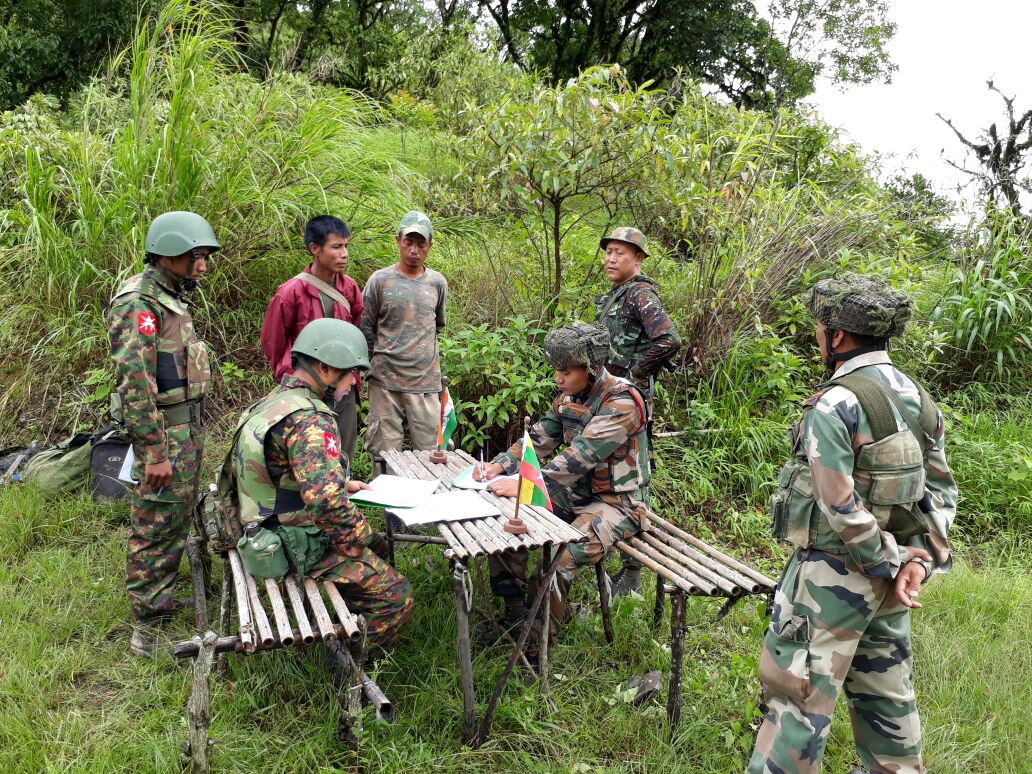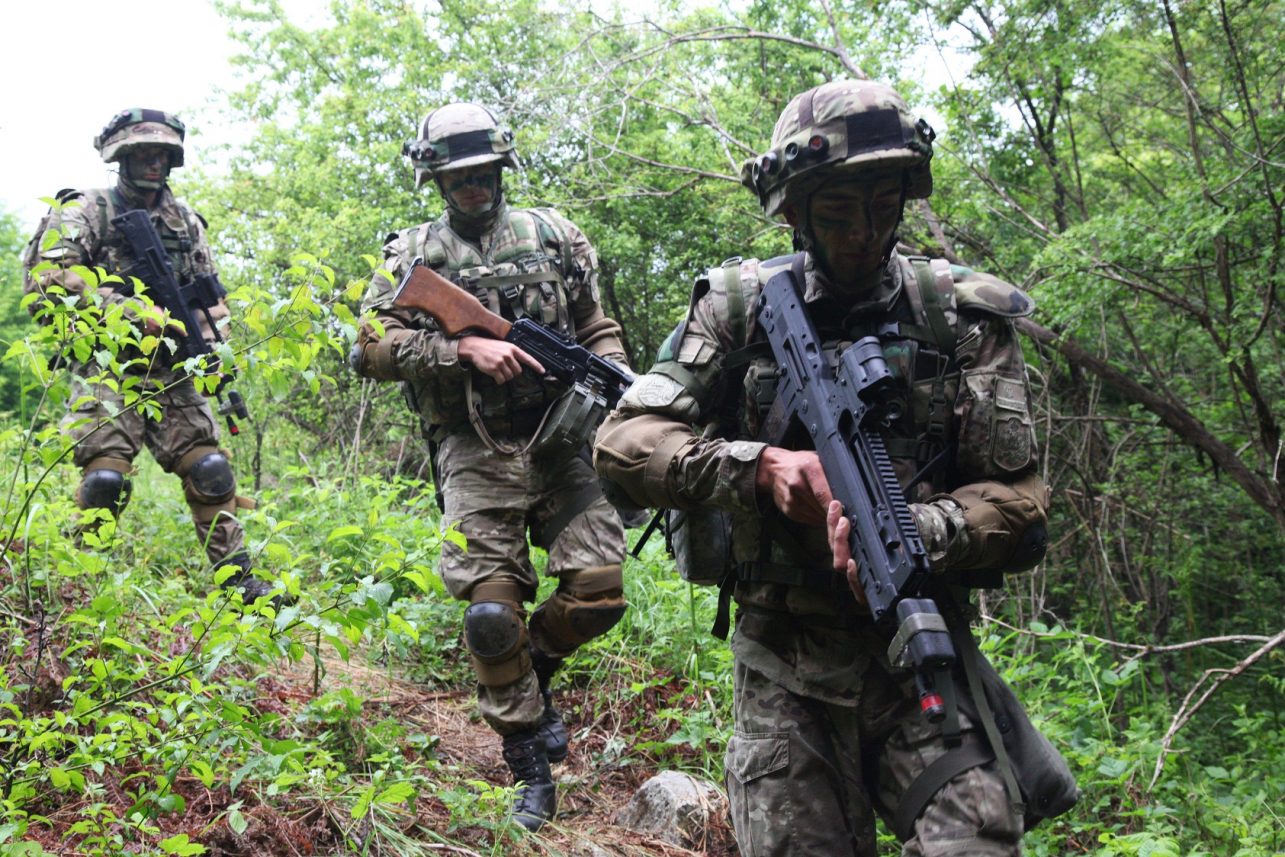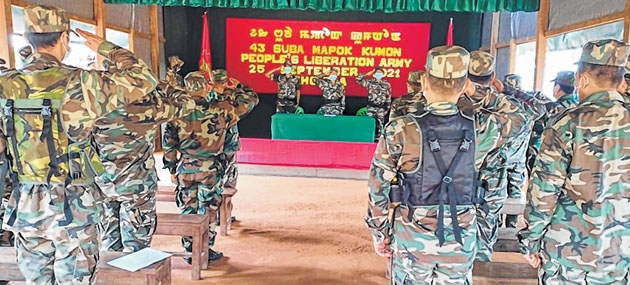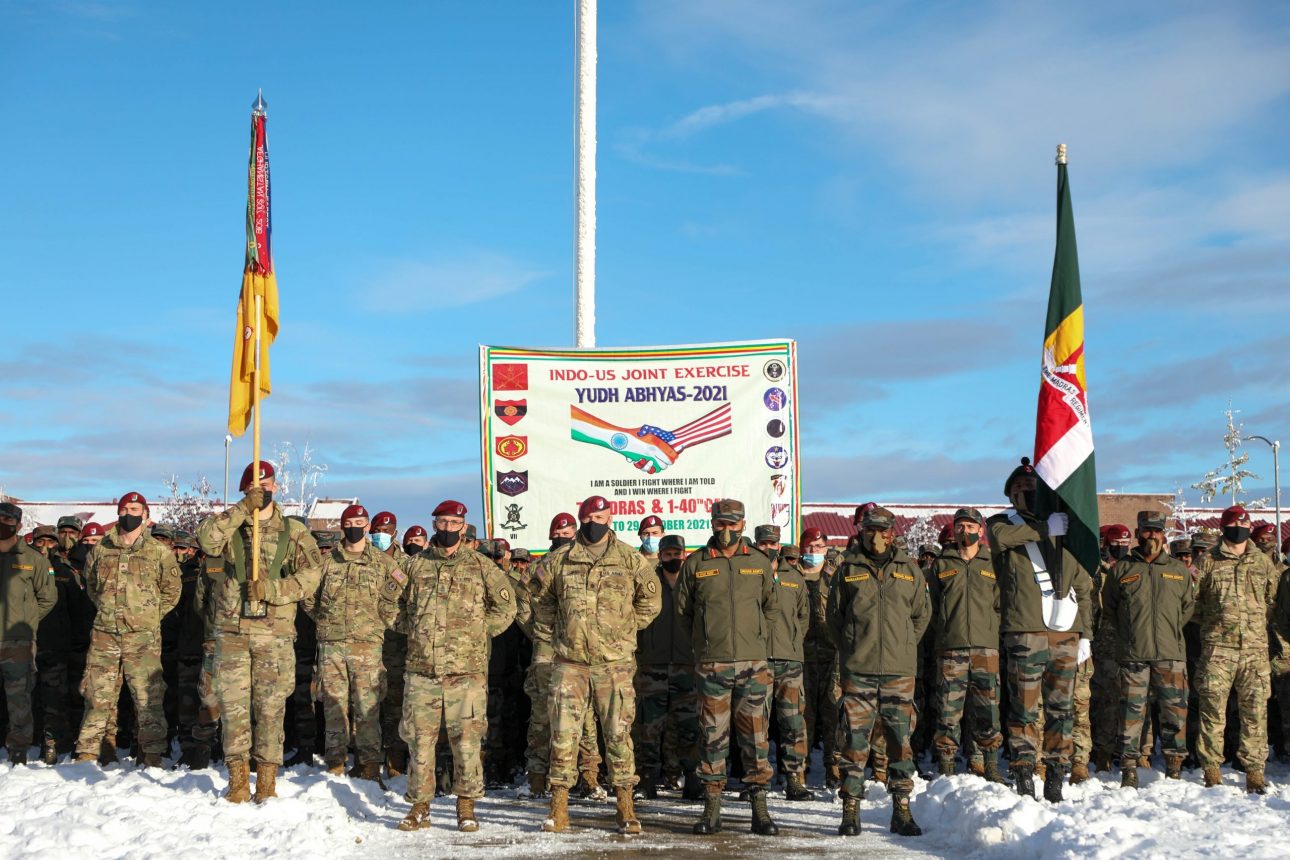The Indian Army’s elite 21 Para Special Forces, which is facing investigation in connection with the killings of 14 civilians in Nagaland last month, reportedly gunned down two Manipuri separatist rebels in what is believed to be a “low-intensity surgical strike” in Myanmar.
The anti-insurgency operation took place in Senam area in Chin state, according to people familiar with the development. The slain rebels belonged to the proscribed People’s Liberation Army (PLA) of Manipur, which claims one SF personnel was also killed in the encounter although the Indian Army has not confirmed any casualty yet. India shares a porous, 1,643-km-long border with Myanmar.
Chin is one of the provinces which, of late, have been witnessing heavy fighting between the Myanmar military and People’s Defense Forces (PDF), the armed wing of the parallel ‘National Unity Government’ that was formed to challenge the junta regime’s legitimacy in the wake of the February 1, 2021 coup.

The latest mission could have been planned as a morale booster for the Indian Army which has been in the eye of the storm over what is now called the Mon massacre. Last month, the Nagaland police named 21 Para SF in a first information report (FIR) filed in connection with the botched anti-insurgency operation.
The Army has ordered a Court of Inquiry into the killing of civilians in Nagaland. A special investigation team (SIT) led by the Additional Director-General of Police is currently probing the alleged role of the Army and the Assam Rifles, in the killings of 14 civilians in Mon district on December 4-5, 2021.
It has so far examined more than 60 witnesses and questioned Army and security forces personnel. The SIT will submit its findings to the state government once it receives reports from the Central Forensic Science Laboratory.

Operation Against PLA
Due to their covert nature, details regarding special operations including the cross-border ones are hard to come by, let alone any official version from the Army.
In the wee hours of January 13, an unknown number of 21 SF Para personnel were airdropped by an Indian military helicopter at Senam village in Chin state. At that time, PLA militants were undergoing physical training. The special forces launched a surprise attack with RPGs and small arms, killing two PLA members. In the ensuing gun battle, one Indian soldier was also killed, PLA claimed.
The PLA, one of the major rebel groups in Manipur, has been fighting for secession from India since the 1970s. “Its founders were originally trained by the Chinese in a military camp near Tibet’s capital Lhasa,” according to Swedish journalist and author Bertil Lintner, who has written extensively on insurgent groups of India’s northeast and Myanmar.

The Indian Army’s surgical strike assumes significance as it came amid reports that the Tatmadaw, as the Myanmar military known, has reached an understanding with northeast India’s rebel groups operating from the country. The move may have been necessitated by the current unrest within the Southeast Asian nation.
Tatmadaw is now busy tackling its domestic turmoil in the form of armed rebellion by the civilian groups. In recent months, many coordinated attacks were launched on junta troops and military installations by PDFs in states such as Chin and Kachin.
In the light of this, a quid pro quo arrangement between the Myanmar military and Indian rebels cannot be ruled out — that the rebel groups would be allowed to run their camps in the country in exchange for their aid in tackling the civilian armed resistance.
It seems Indian security agencies gathered actionable intelligence about PLA’s presence in Senam village in Chin state. So, does this indicate that Manipuri rebels have a sizeable presence in Chin state? PLA, and other rebel groups from India’s northeast, are known to operate from Sagaing Division in southern Myanmar.
The timing of the operation is also interesting; one may be left wondering whether New Delhi has realized that Myanmar’s junta forces may not be as cooperative as they thought to be if the latest developments are anything to go by.
Given the ongoing civil war in the country and their own resource crunch, it is unlikely that junta forces may be willing to hand over these rebels to India.

Not A Major Success
Going by the kill ratio – 2:1 (if Army has indeed lost one soldier) – the operation cannot be called a major success. Manipuri rebels, like the Nagas, are known for their fierce fighting skills. On November 13, PLA militants and a Naga group jointly laid an ambush, killing seven people including an Assam Rifles commanding officer, his wife, their six-year-old son and four other troopers.
This is not the first time the Indian Army has launched a cross-border operation in Myanmar. In 2015, a section of Indian media reported that ‘Operation Hot Pursuit’ launched by 21 Para SF was a huge success.
The purported cross-border strike was in response to an ambush on an army convoy by northeastern militants, which resulted in the death of 18 Indian Army soldiers in Manipur on June 4, 2015.
However, the surgical strike inside Myanmar was questioned by insurgency experts, who said it was highly unlikely that the rebel groups would be hiding so close to the border after conducting such a deadly attack given they devise their escape plan well in advance.
In all probability, they were deep inside Myanmar by the time Indian Army crossed the border, one expert argued.
- Jayanta Kalita is the Editor of The EurAsian Times. A former Associate Editor at Hindustan Times, Jayanta has worked for ThePrint, The Times of India, Mail Today among other media outlets. He can be reached at editor.eurasiantimes@gmail.com / editor@eurasiantimes.com
- Follow EurAsian Times on Google News




